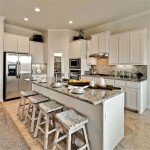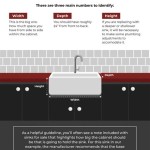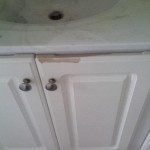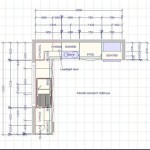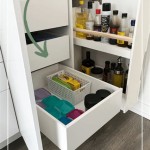Metal Kitchen Cabinets: A Retro Renaissance
Metal kitchen cabinets, once a ubiquitous feature in mid-century American homes, are experiencing a resurgence in popularity. This trend isn't merely a nostalgic glance backward; it reflects a growing appreciation for the durability, style, and unique aesthetic qualities that metal cabinets offer. This article will explore the historical context of metal kitchen cabinets, examine their advantages and disadvantages, and discuss the factors to consider when incorporating them into contemporary kitchen designs.
The history of metal kitchen cabinets is intrinsically linked to the post-World War II era. As mass production techniques advanced and the demand for affordable, modern housing surged, metal cabinetry presented a practical and economical solution. Companies like Youngstown Kitchens and Geneva Modern Kitchens became household names, offering a range of steel cabinets in vibrant colors and streamlined designs. These cabinets were marketed as being sanitary, fire-resistant, and easy to clean – features that resonated strongly with a generation striving for a cleaner, more efficient lifestyle. The era's design ethos, characterized by optimism and a forward-looking perspective, embraced the sleek, machine-made aesthetic of metal.
However, the popularity of metal cabinets began to wane in the late 1960s and 1970s. The rise of wood cabinetry, particularly oak and maple, offered a warmer, more natural look that appealed to changing tastes. Wood was also perceived as being less prone to dents and scratches, despite metal's inherent strength. The mass-produced uniformity of metal cabinets also fell out of favor as homeowners sought more personalized and unique kitchen designs.
Today, the renewed interest in metal kitchen cabinets is driven by several factors. A growing appreciation for mid-century modern design, coupled with a desire for durable and sustainable materials, has contributed to their resurgence. Furthermore, metal cabinets offer a distinct aesthetic that can create a striking contrast in contemporary kitchens, providing visual interest and a touch of retro charm. Many homeowners are also drawn to the inherent sustainability of metal, as it can be recycled and repurposed more easily than wood.
Durability and Longevity of Metal Kitchen Cabinets
One of the primary advantages of metal kitchen cabinets is their exceptional durability. Unlike wood, metal is resistant to moisture, pests, and fire. Steel cabinets, in particular, are known for their strength and ability to withstand heavy use. Properly maintained, metal cabinets can last for decades, making them a long-term investment in the home. The inherent resistance to moisture also makes them a suitable choice for kitchens in humid climates or areas prone to water damage.
The powder-coated finishes commonly used on metal cabinets are also highly durable and resistant to chipping, scratching, and fading. This means that metal cabinets can maintain their appearance for many years with minimal maintenance. In contrast, wood cabinets require regular refinishing and sealing to protect them from moisture and wear. The low-maintenance nature of metal cabinets is a significant benefit for busy homeowners who want a kitchen that looks great without requiring constant upkeep.
Furthermore, the sturdy construction of metal cabinets ensures that they can support heavy countertops and appliances without sagging or warping. This is particularly important for kitchens with granite, quartz, or other heavy countertop materials. Metal cabinets provide a solid and reliable foundation for these countertops, ensuring that they remain stable and secure for years to come. The structural integrity of metal cabinets also makes them a good choice for kitchens that undergo frequent use and heavy traffic.
Aesthetic Versatility and Design Possibilities
While often associated with a retro aesthetic, metal kitchen cabinets are surprisingly versatile and can be incorporated into a variety of design styles. They can be painted in a wide range of colors, from bold and vibrant hues to subtle and sophisticated neutrals. This allows homeowners to customize the look of their kitchen and create a space that reflects their personal style. The sleek, clean lines of metal cabinets also complement minimalist and modern design schemes.
Metal cabinets can also be paired with a variety of countertop materials, including wood, granite, quartz, and concrete. The contrast between the cool, industrial feel of metal and the warmth and texture of other materials can create a visually stunning effect. For example, pairing metal cabinets with a butcher block countertop can create a rustic-industrial look, while pairing them with a sleek quartz countertop can create a more modern and sophisticated aesthetic.
Furthermore, metal cabinets can be customized with different hardware options, such as chrome pulls, vintage knobs, or minimalist handles. The choice of hardware can significantly impact the overall look of the kitchen and can be used to enhance the retro charm or create a more contemporary feel. The ability to customize metal cabinets with different colors, countertop materials, and hardware options makes them a versatile choice for any kitchen design.
Metal cabinets can also be incorporated into open shelving designs. Open shelving can create a more spacious and airy feel in the kitchen, while metal cabinets provide a solid and sturdy base for the shelving. This combination can be particularly effective in smaller kitchens where maximizing space is a priority. Open shelving also allows homeowners to display their favorite dishes, cookware, and decorative items, adding a personal touch to the kitchen.
Considerations When Choosing Metal Kitchen Cabinets
Despite their many advantages, there are also some considerations to keep in mind when choosing metal kitchen cabinets. One potential drawback is the potential for dents and scratches. While powder-coated finishes are durable, they can still be susceptible to damage from sharp objects or heavy impacts. However, minor dents and scratches can often be repaired with touch-up paint or by a professional. It is important to handle metal cabinets with care during installation and avoid exposing them to abrasive cleaners or harsh chemicals.
Another consideration is the potential for rust. While modern metal cabinets are typically treated with rust-resistant coatings, it is still important to protect them from excessive moisture. In particular, it is important to wipe up spills promptly and ensure that the cabinets are properly ventilated. Regular cleaning and maintenance can help prevent rust and prolong the lifespan of metal cabinets.
Finally, the cost of metal cabinets can be higher than that of some wood cabinet options, particularly for custom-made cabinets. However, the increased durability and longevity of metal cabinets can often offset the higher initial cost. Furthermore, the availability of vintage metal cabinets offers a more affordable option for homeowners who are willing to restore and repurpose them. When comparing the cost of metal cabinets to other options, it is important to consider the long-term value and potential maintenance costs.
When selecting metal kitchen cabinets, it is also crucial to consider the quality of the materials and construction. Look for cabinets made from heavy-gauge steel with a durable powder-coated finish. Check the hinges and drawer slides to ensure that they are sturdy and operate smoothly. It is also important to choose a reputable manufacturer or supplier who offers a warranty on their products. Investing in high-quality metal cabinets will ensure that they last for many years and provide a solid foundation for the kitchen.
The installation process for metal cabinets is similar to that of wood cabinets, but it may require specialized tools and expertise. It is important to hire a qualified contractor who has experience installing metal cabinets. Proper installation is essential to ensure that the cabinets are level, secure, and properly aligned. A professional installer can also help to address any potential issues, such as uneven floors or walls.
In conclusion, metal kitchen cabinets offer a unique blend of retro charm, durability, and versatility. While they may not be the perfect choice for every kitchen, they can be a stunning and practical option for homeowners who appreciate their aesthetic qualities and lasting value. By carefully considering the advantages and disadvantages, and by selecting high-quality cabinets and a qualified installer, homeowners can create a kitchen that is both stylish and functional for years to come.

48 Best Steel Metal Kitchen Cabinets Beautiful Photos Vintage

The History Of Vintage Steel Kitchen Cabinets 100 Brands Retro Renovation

Ann Recreates The Look Of Vintage Metal Kitchen Cabinets In Wood

This Time Capsule Ge Steel Kitchen Has Almost Everything Kitchens Were Famous For Retro Renovation

Update Montgomery Ward Steel Kitchen Cabinets A Catalog From 1941 Retro Renovation Metal Vintage Decor

Aqua Ge Metal Kitchen Cabinets For On The Forum Michigan Retro Renovation Steel Vintage

Vintage Steel Kitchen Cabinetry Old Houses Under 50k

Vintage English Rose Metal Kitchen Cabinets From Spitfires To Luxe Salvage And Back Ag Accessories

Kitchen Cabinets Redo Okay The Fridge Comes Too Mary Olive Design

Morton Steel Kitchen Cabinets Since 1942 Retro Renovation
Related Posts

